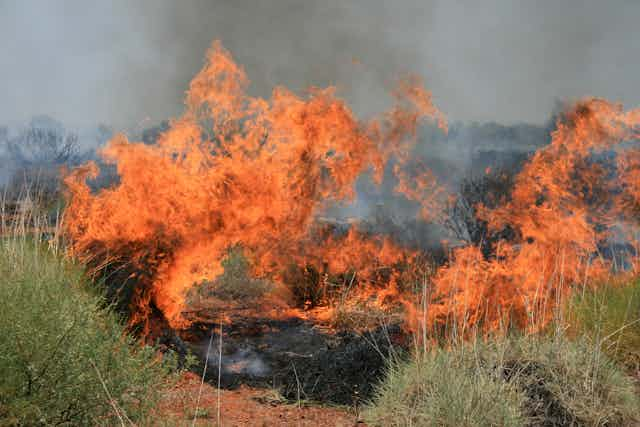Massive bushfires in recent months have tragically claimed people’s lives and destroyed their homes. These events are becoming more common as our warming and drying climate increases the frequency, intensity and extent of fires.
But these impacts aren’t just restricted to humans. Our native animals and plants are also affected by fire. Some species have even been pushed to the verge of extinction by the way fire patterns have changed. The International Union for the Conservation of Nature’s Red List identifies “fire and fire suppression” as a threat to more than 100 threatened species in Australia.
Recent bushfires in Victoria, Western Australia and Tasmania have all taken a devastating toll on threatened species and unique ecosystems.

Burning biodiversity
Cape Arid National Park on WA’s south coast is home to the only known population of the critically endangered Western Ground Parrot. The parrot lives in unburned heathland, and its distribution has shrunk rapidly in recent decades.
Before last year’s fires, only 140 birds were thought to remain. Then in October and November a series of bushfires burned 90% of the species’ known habitat. It is not known how many birds may have survived the fires.
Also late last year, fires at Two People’s Bay Nature Reserve destroyed habitat of the critically endangered Gilbert’s Potoroo (the world’s rarest marsupial), as well as habitat of the threatened Noisy Scrub Bird, Western Bristlebird, Western Ringtail Possum, Quokka, and the plant Andersonia pinaster. Four populations of the rare Banksia verticillata were also burned in November at the nearby Torndirrup National Park.
These extreme fire events are also impacting species in southeastern Australia. In December, 2,500 hectares were burned in Victoria’s Otway Ranges. Native mammal populations in this region have been declining over recent decades, including that of the vulnerable New Holland Mouse. Such fires could worsen the outlook for these species, especially since foxes in the Otways are attracted to and increase their consumption of some mammals in recently burned areas.
The current burning of World Heritage forests in Tasmania is an equally concerning conservation catastrophe, and may be doing irreversible damage to these unique ecosystems.

As part of its Threatened Species Strategy, the federal government has identified 20 threatened bird and 20 threatened mammal species for priority conservation action.
The list includes many species threatened by inappropriate fire regimes, such as Gilbert’s Potoroo, Western Ground Parrot, Mallee Emu Wren, South-eastern Red-tailed Black-Cockatoo, Western Ringtail Possum, Malleefowl, and Leadbeater’s Possum.
Halting extinction
But since these species evolved in a fire-prone environment, why is fire a problem for them now?
Not only are fires becoming more severe and frequent in parts of Australia, but for many species there is not much habitat left. Such species have already declined and are often reliant on habitat that hasn’t been burned for a long time, so a single fire can wipe out entire populations.
This creates complex ecological challenges for land managers and conservationists - especially where prescribed burning is used to reduce fire risk to people and their property.
Prescribed burning can be a valuable tool in protecting habitat from wildfire, but it must be science-based and carefully targeted. Until recently, Victoria had a policy to burn 5% of its land area every year, a practice that was threatening sensitive ecosystems and species, such as the endangered South-eastern Red-tailed Black Cockatoo. The recent lifting of the policy is therefore a major step away from arbitrary management targets and - hopefully - towards science-based conservation.
Other threats may have started the declines and made species more vulnerable to fire. These include habitat loss, disease and introduced predators.
Therefore, it is vital that conservation plans consider interactions between threats. When a species has only a handful of individuals remaining, captive breeding and the creation of insurance populations are sometimes necessary.
Climate change is expected to make fire patterns worse for wildlife in the future. We need political leadership on climate action if we are to understand and mitigate these impacts. Otherwise, we risk robbing future generations of the opportunity to see much of our amazing native wildlife that is currently threatened with extinction.

The authors acknowledge the Friends of the Western Ground Parrot Group, Gilbert’s Potoroo Action Group, and Sarah Barrett of the WA Department of Parks and Wildlife for photos and information.

